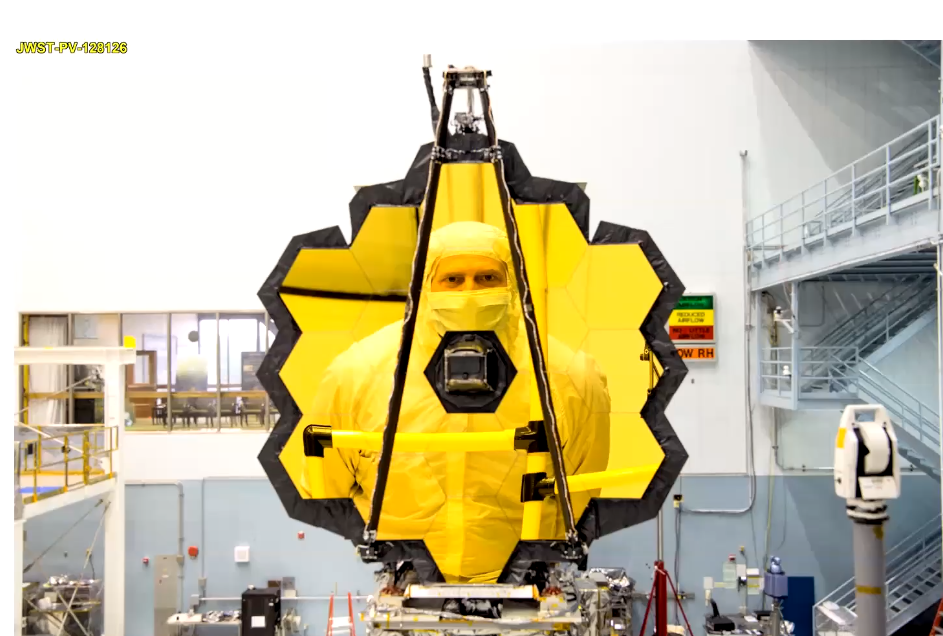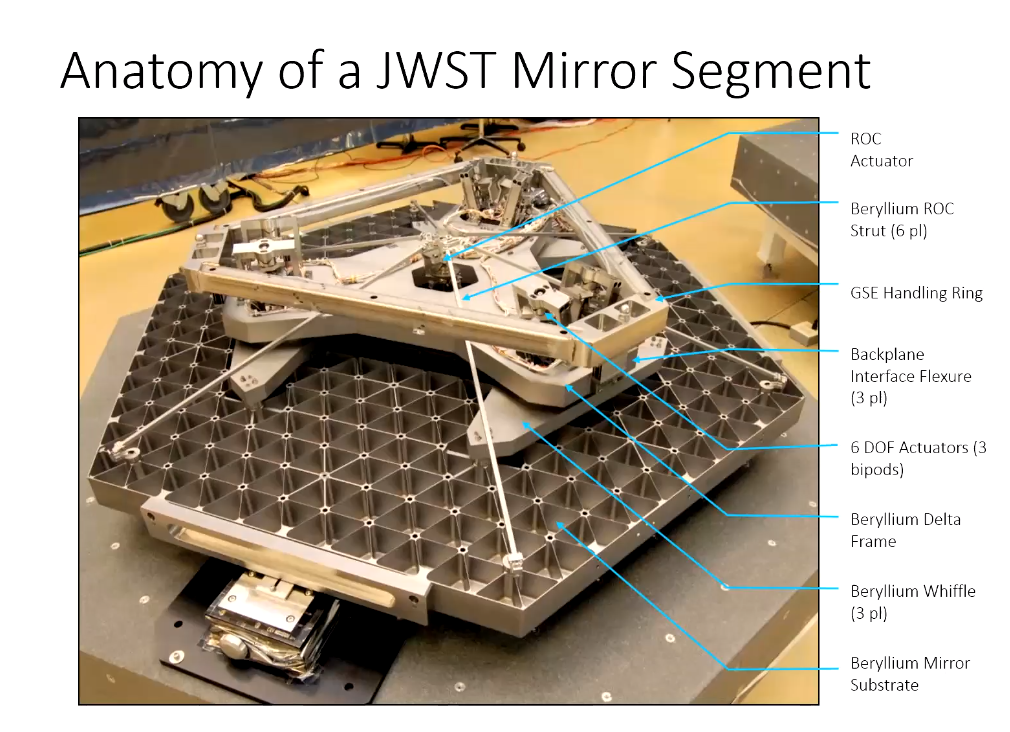Phasing the James Webb Space Telescope
Phasing the James Webb Space Telescope
Becky Bosco, Senior Director of Corporate Communications, Optica
On January 8, 2022, NASA’s James Webb Space Telescope team fully deployed its 21-foot, gold-coated primary mirror, successfully completing the final stage of all major spacecraft deployments to prepare for science operations. The operation was likened to a “Saturday morning Transformer character” as explained by Scott Acton, Ball Aerospace. The James Webb Space Telescope’s sophisticated optical system required new technology and methods to ensure its components can perform as designed—and it presented a significant challenge from the engineering to the optics. Acton, and his team at Ball Aerospace, were responsible for the Wavefront Sensing and Controls commissioning process for the James Webb Space Telescope. Acton’s plenary presentation at Optica’s Imaging and Applied Optics Congress described the process from the initial deployment of the optics to the final alignment of the mirrors.

Caption: Scott Acton standing in just the right spot for a mirror picture with James Webb Space Telescope before its deployment.
Image Credit: Scott Acton, Ball Aerospace
Roughly 100 times more powerful than its predecessor the Hubble Space Telescope, which has transformed our understanding of the cosmos over the past 31 years, Webb will reveal previously hidden aspects of the Universe. All of Webb’s instruments observe infrared light, allowing it to study light has traveled from distant galaxies and has been stretched to redder wavelengths by the expansion of the Universe. Webb will also be able to study the dust that envelops star-forming regions, as well as the gas between the stars, which is not as visible at shorter wavelengths. The IR light can also travel around the dust particles, instead of being blocked by them—as happens with visible light. This occurrence is why we can see many stars that are forming in a nebula in the IR that are not seen in the visible spectrum. Webb team members saw the first photons of starlight that traveled through the entire telescope and were detected by the Near Infrared Camera (NIRCam) instrument. This milestone marks the first of many steps to capture images that are at first unfocused to slowly fine-tune the telescope. This is the very beginning of the process, but so far, the initial results match expectations and simulations.

Caption: Each of Webb's mirror segments are designed to be moved individually to focus the telescope.
Image Credit: Scott Acton, Ball Aerospace
A team of collaborators from Ball Aerospace, Space Telescope Science Institute, and NASA’s Goddard Space Flight Center is using data taken with NIRCam to progressively align the telescope. On Wednesday, 13 July, the collaboration revealed the images the world has been waiting for—a deeper look into the Universe’s past than ever. The optical performance of the telescope continues to be better than the engineering team’s most optimistic predictions. Webb’s mirrors are now directing fully focused light collected from space down into each instrument, and each instrument is successfully capturing images with the light being delivered to them. The image quality delivered to all instruments was “diffraction-limited,” meaning that the fineness of detail that can be seen is as good as physically possible given the size of the telescope. From this point forward, the only changes to the mirrors will be very small, periodic adjustments to the primary mirror segments.
“It is awe-inspiring to see these images, which are the culmination of more than 20 years of really hard work by thousands of people across multiple companies, government agencies and academic institutions,” said Acton. “These are just the first of what will be exquisitely-rendered and detailed images that will shed new light on the formation of the universe as well as the galaxies and stars within it.”
